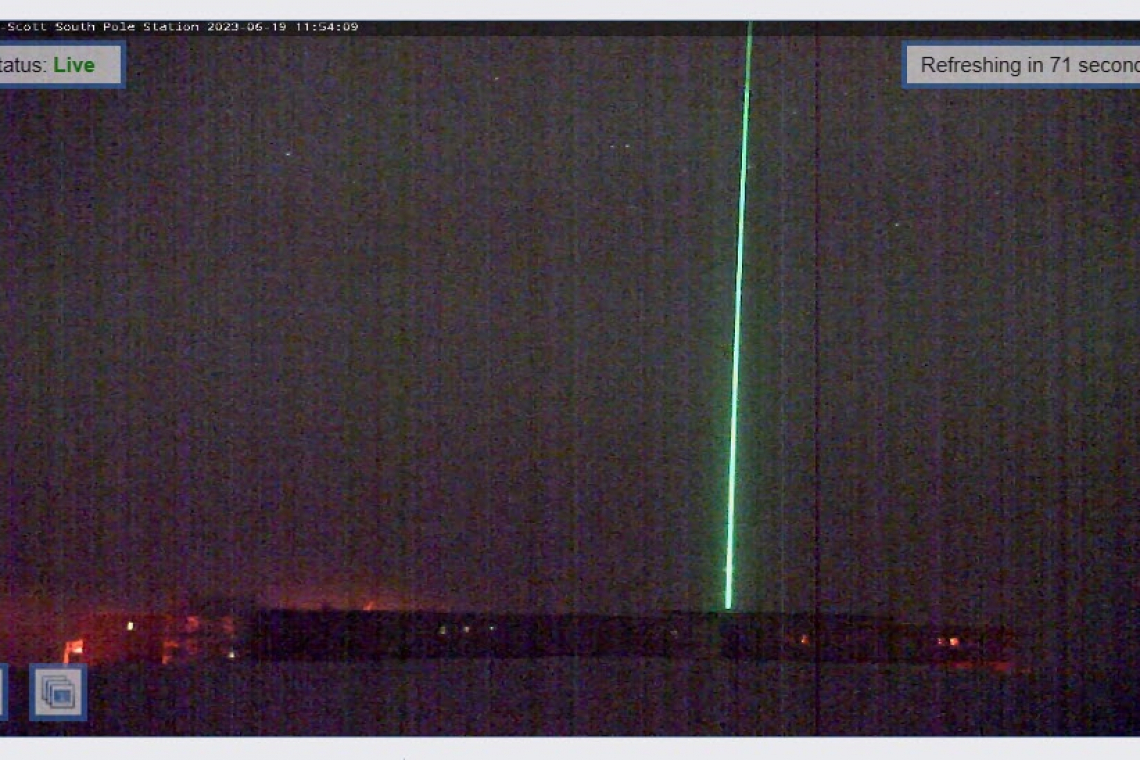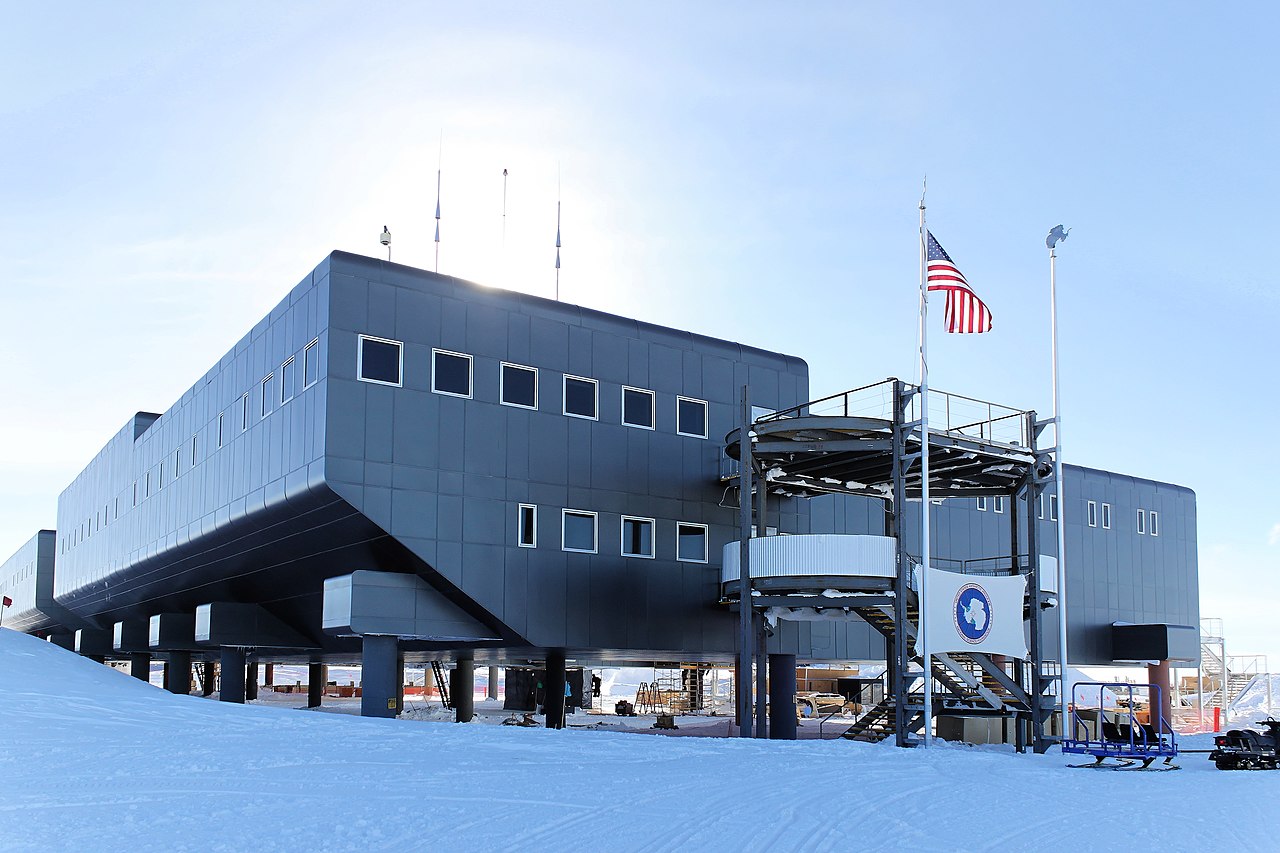Some type of very large laser-type light is being emitted directly into space from the Amundsen-Scott South Pole Station.
The Amundsen–Scott South Pole Station is a United States scientific research station at the South Pole of the Earth. It is the southernmost point under the jurisdiction (not sovereignty) of the United States. The station is located on the high plateau of Antarctica at 9,301 feet (2,835 m) above sea level. It is administered by the Office of Polar Programs of the National Science Foundation, specifically the United States Antarctic Program (USAP). It is named in honor of Norwegian Roald Amundsen and Briton Robert F. Scott, who led separate teams that raced to become the first to the pole in the early 1900s.
The original Amundsen–Scott Station was built by Navy Seabees for the federal government of the United States during November 1956, as part of its commitment to the scientific goals of the International Geophysical Year, an effort lasting from January 1957 through June 1958 to study, among other things, the geophysics of the polar regions of Earth.
Before November 1956, there was no permanent artificial structure at the pole, and practically no human presence in the interior of Antarctica. The few scientific stations in Antarctica were near its coast. The station has been continuously occupied since it was built and has been rebuilt, expanded, and upgraded several times.
The station is the only inhabited place on the surface of the Earth from which the Sun is continuously visible for six months; it is then continuously dark for the next six months, with approximately two days of averaged dark and light, twilight, namely the equinoxes.



